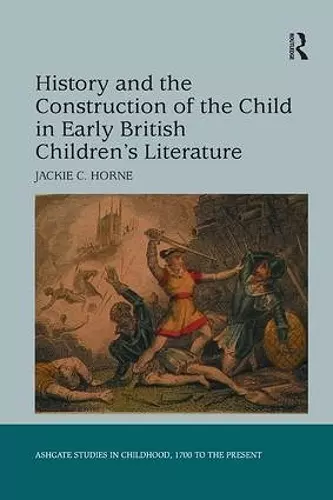History and the Construction of the Child in Early British Children's Literature
Format:Paperback
Publisher:Taylor & Francis Ltd
Published:17th Nov '16
Currently unavailable, and unfortunately no date known when it will be back
This paperback is available in another edition too:
- Hardback£160.00(9781409407881)

How did the 'flat' characters of eighteenth-century children's literature become 'round' by the mid-nineteenth? While previous critics have pointed to literary Romanticism for an explanation, Jackie C. Horne argues that this shift can be better understood by looking to the discipline of history. Eighteenth-century humanism believed the purpose of history was to teach private and public virtue by creating idealized readers to emulate. Eighteenth-century children's literature, with its impossibly perfect protagonists (and its equally imperfect villains) echoes history's exemplar goals. Exemplar history, however, came under increasing pressure during the period, and the resulting changes in historiographical practice - an increased need for reader engagement and the widening of history's purview to include the morals, manners, and material lives of everyday people - find their mirror in changes in fiction for children. Horne situates hitherto neglected Robinsonades, historical novels, and fictionalized histories within the cultural, social, and political contexts of the period to trace the ways in which idealized characters gradually gave way to protagonists who fostered readers' sympathetic engagement. Horne's study will be of interest to specialists in children's literature, the history of education, and book history.
Prize: 'Recommended' book for 2011 by the Children's Literature Association 'The first half of the nineteenth century has for too long been regarded as a sort of dead-zone for British children's books, as if authors and readers were somehow in a limbo, waiting for the arrival of children's literature’s Golden Age. At last, here is a book that puts this right, showing us some of the wonderfully innovative and imaginative children’s books published in the age before Alice. Looking at both works of fiction and history, and most intriguingly at books that span the divide, Jackie Horne has produced a riveting study that opens our eyes to the experimentation being undertaken by forgotten authors like Agnes Strickland, Barbara Hofland and Jefferys Taylor. This is a fascinating study that rescues some marvellous books from undeserved obscurity and subjects them to perceptive and stimulating analysis. It will force scholars of both children's literature and the history of education to reconsider their view of this too often neglected period.' M. O. Grenby, Newcastle University, UK 'This is an intelligent, interesting and thought-provoking book about some of the crucial changes which took place in children's literature between 1780 and 1840. Well-written and extremely well-researched... there is so much to admire in Jackie Horne's stimulating book.' Children's Books History Society Newsletter 'To its great credit, this book richly explains the pleasures - both casual and formal - of pedagogical literature. It also makes two major points about adolescent fiction: it can prompt us to identify with ordinary characters even while delivering moral lessons, and it can trump its status as a subgenre to become significant as literature. Lionel Trilling wrote of E.M. Forster that he was "the only living novelist who can be read again and again and who, after each reading, gives me what few writers can give us after our first days of novel-reading, the sensation of having learne
ISBN: 9781138268319
Dimensions: unknown
Weight: 453g
304 pages